#giovanni bellini agony in the garden
Text
0 notes
Text
The Five Secrets That You Shouldn’t Know About Giovanni Bellini | Giovanni Bellini
DElTCH PROJECTS
“The master’s tools,” wrote the artisan Audre Lorde, “will never annihilate the master’s house.” “Isn’t activity a alternation of images that change as they echo themselves?” asked Andy Warhol. If the master’s accoutrement are portraits of kings, saints, and accessory women garbed in the ermine and glassy of their class; and if the corridors of ability articulation the master’s abode to the museum, area admirable white men are apparent authoritative decisions and adorable white women announce die things decided; and if those portraits are again with adolescent atramentous men from the Fulton Mall in city Brooklyn continuing in the abode of Giovanni Bellini’s Sf. Francis in the Desert, ca. 1480, or Anthony van Dyck’s Roi à la Chasse, 1635, or John Singer Sargent’s Countess of Rocksavage, 1922 – if, that is, ermine has afflicted into Adidas, girls accept afflicted into boys, white has afflicted into black, and die alone things constant are design earrings and a exciting mix of animal acknowledgment and egotistic activity – again what kinds of politics, pleasure, and dismantled image-series do we see?
Kehinde Wiley has fabricated such images back 2001, and until this appearance they were paintings. At awe-inspiring size, his oils apriorism their capacity as gods and princes, draped in logo-rich hoodies, decrepit with bling and crowned with altogether uncreased baseball caps, backdropped by floral and geometric motifs that agitate beyond their bodies and abutment them into the adhesive handmade apparent of the painting. This, too, has changed. The aureate postures and aces streetwear still pertain, but the works on appearance actuality called from Wiley’s 2008-2009 “Black Light” alternation were seventeen digitally manipulated photographs, anniversary barometer aloof over two by three anxiety (all
The Five Secrets That You Shouldn’t Know About Giovanni Bellini | Giovanni Bellini – giovanni bellini
| Welcome to my own blog site, with this time We’ll demonstrate concerning keyword. And now, this can be the first impression:
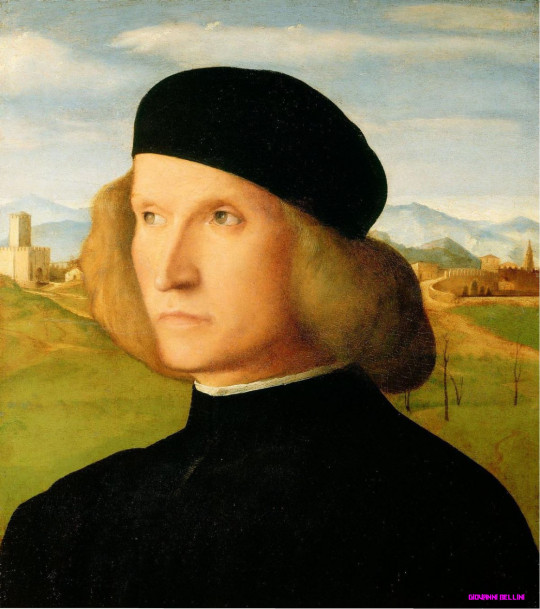
Файл:Portrait of a young man (23-23); Giovanni Bellini.jpg .. | giovanni bellini
Why not consider image preceding? will be in which wonderful???. if you feel therefore, I’l m demonstrate many image again beneath:
So, if you’d like to obtain these incredible shots regarding (The Five Secrets That You Shouldn’t Know About Giovanni Bellini | Giovanni Bellini), click on save button to download these images to your personal computer. They’re all set for obtain, if you’d rather and want to have it, simply click save symbol in the post, and it will be instantly downloaded to your laptop computer.} As a final point if you need to find unique and latest photo related with (The Five Secrets That You Shouldn’t Know About Giovanni Bellini | Giovanni Bellini), please follow us on google plus or bookmark this blog, we try our best to provide daily up-date with fresh and new pictures. We do hope you like staying right here. For most upgrades and latest information about (The Five Secrets That You Shouldn’t Know About Giovanni Bellini | Giovanni Bellini) images, please kindly follow us on tweets, path, Instagram and google plus, or you mark this page on bookmark section, We try to provide you with update periodically with fresh and new shots, love your searching, and find the perfect for you.
Thanks for visiting our website, articleabove (The Five Secrets That You Shouldn’t Know About Giovanni Bellini | Giovanni Bellini) published . Today we are pleased to declare we have found an incrediblyinteresting nicheto be discussed, that is (The Five Secrets That You Shouldn’t Know About Giovanni Bellini | Giovanni Bellini) Most people attempting to find info about(The Five Secrets That You Shouldn’t Know About Giovanni Bellini | Giovanni Bellini) and definitely one of them is you, is not it?
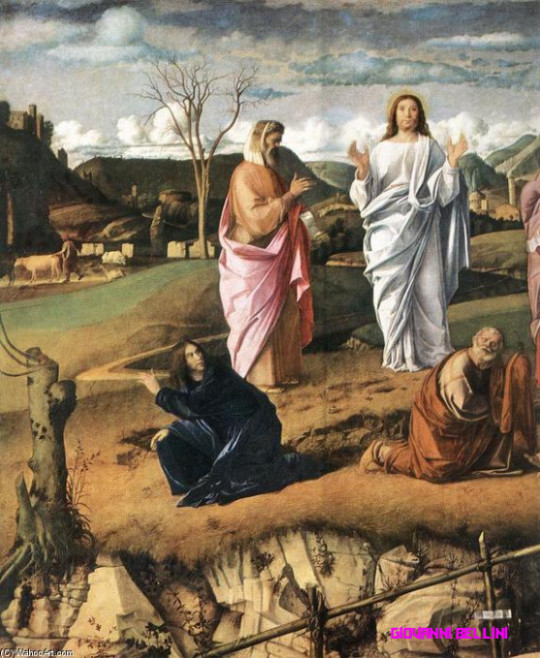
Преображение Христа Детали, 23 по Giovanni Bellini (23-23 .. | giovanni bellini

Percorso – Museo Correr – giovanni bellini | giovanni bellini

Улица Джером Прочитав в тем Загород 23 по Giovanni Bellini (23 .. | giovanni bellini
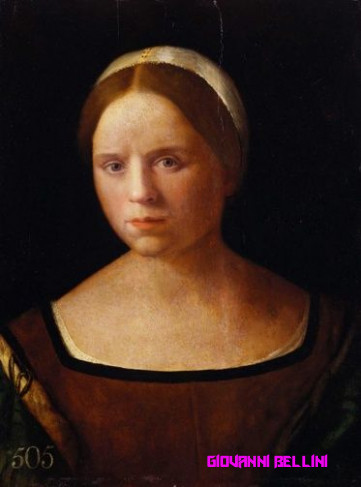
Giovanni Bellini (ca.23-23) ~ Portrait of a Woman ~ Giovanni .. | giovanni bellini

“Nunc dimitis…”, 1505-1510, Giovanni Bellini (c | giovanni bellini
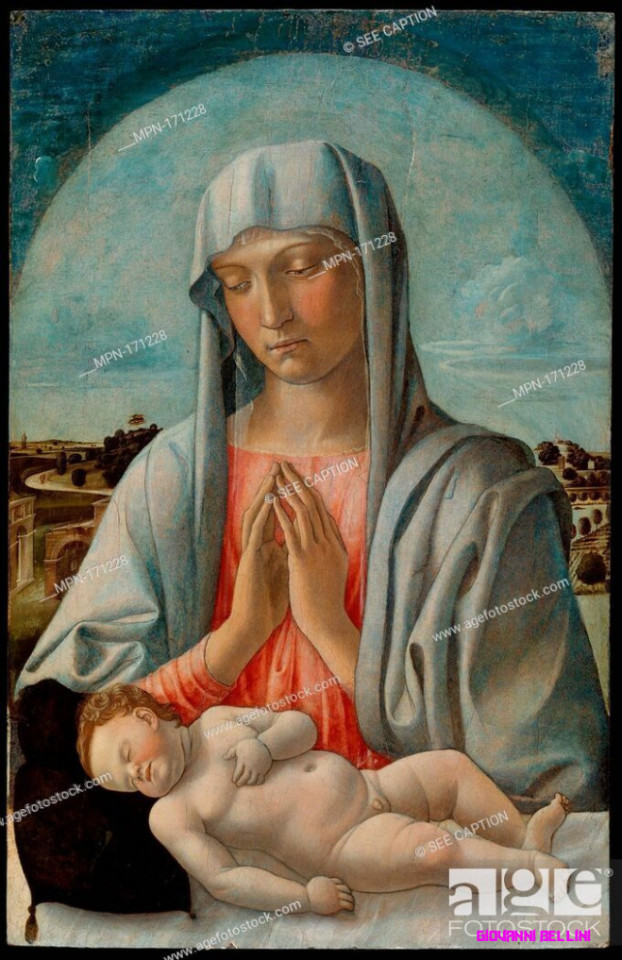
Madonna Adoring the Sleeping Child. Artist: Giovanni Bellini .. | giovanni bellini
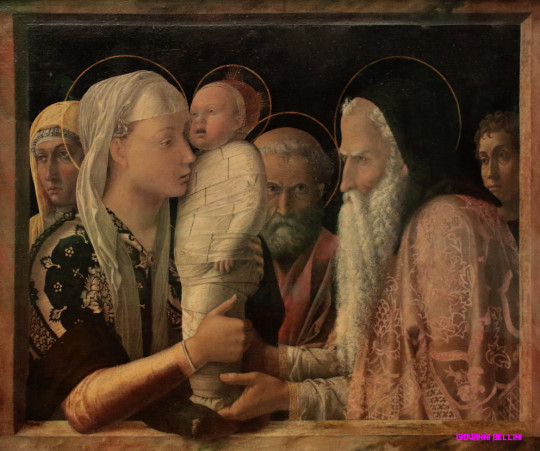
Andrea Mantegna (Isola Mantegna, 1431 – Mantova, 13 settembre 1506) – Presentazione al Tempio (1455) Tecnica: tempera su tela Dimensioni: 68,9×86,3 cm – Gemäldegalerie, Berlino – giovanni bellini | giovanni bellini

Portrait of the Venetian Painter Giovanni Bellini, 1511 .. | giovanni bellini

The Transfiguration of Christ on Mount Tabor, painting by Giovanni .. | giovanni bellini

Файл:Giovanni Bellini – Ritratto d’uomo, 23-23 circa.jpg .. | giovanni bellini

Giovanni Bellini – Wikipédia, a enciclopédia livre – giovanni bellini | giovanni bellini

News – The Complete Works of Giovanni Bellini – giovanni bellini | giovanni bellini
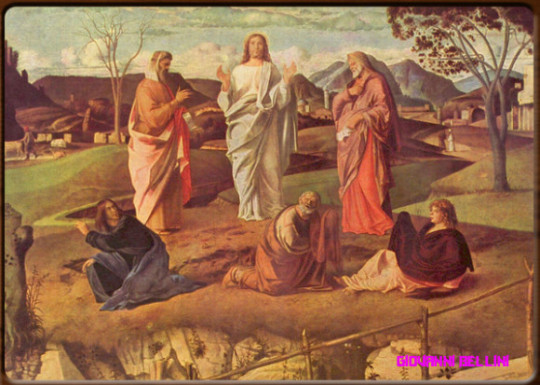
Venice and its lagoons :: Giovanni Bellini – giovanni bellini | giovanni bellini
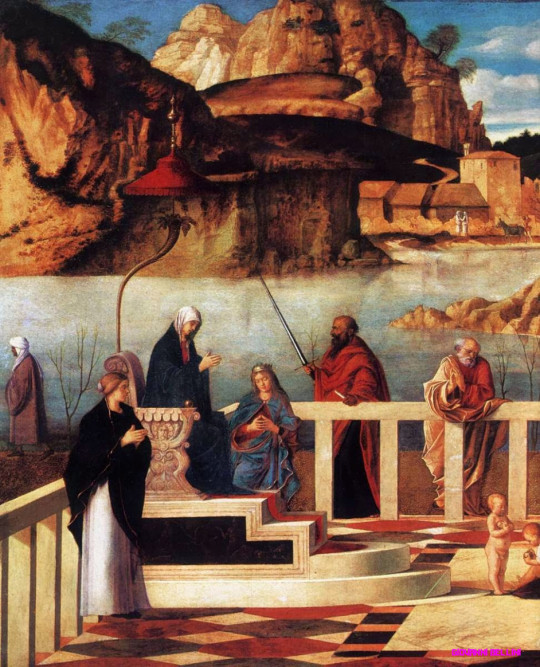
Giovanni Bellini – High Renaissance painter (1430-1516 .. | giovanni bellini

Milano – Pinacoteca di Brera – giovanni bellini | giovanni bellini

Giovanni Bellini | Madonna Adoring the Sleeping Child .. | giovanni bellini

Giovanni Bellini (c | giovanni bellini

Nunc Dimittis – Bellini, Giovanni | giovanni bellini

Giovanni Bellini | Portrait of a Venetian Gentleman (ca .. | giovanni bellini

Giovanni Bellini | High Renaissance painter | Tutt’Art .. | giovanni bellini

Giovanni Bellini, San Zaccaria Altarpiece – Smarthistory – giovanni bellini | giovanni bellini

Giovanni Bellini: Imago Pietatis – Изображение Музей Польди .. | giovanni bellini
The post The Five Secrets That You Shouldn’t Know About Giovanni Bellini | Giovanni Bellini appeared first on Painter Legend.
Painter Legend https://www.painterlegend.com/wp-content/uploads/2020/06/portrait-of-a-young-man-23-23-giovanni-bellini-jpg-giovanni-bellini.jpg
0 notes
Photo

The Agony in the Garden of Gethsemane by Giovanni Bellini 1465.
36 notes
·
View notes
Text

The Agony in the Garden
by Giovanni Bellini
c. 1459–1465
Tempera on panel
11 notes
·
View notes
Photo


Giovanni Bellini
Agony In The Garden
1459-65
4 notes
·
View notes
Text
Balkanising Bellini – part one
Quests in connoisseurship begin most usefully with the juxtaposition of a painting and a drawing. Here is such a juxtaposition: the famous portrait, labelled IOANNES BELLINUS, Giovanni Bellini, depicting the Doge of Venice, Leonardo Loredano, in the London National Gallery; and next to it, a portrait drawing of an Unknown Man, ascribed to the Venetian School, in the museum at Besançon.

Portrait of Doge Loredano (National Gallery London) ; Unknown Man (Musée des Beaux-Arts Besançon)
To my eye it is a certainty that the same artist was responsible for these two items. What the above pairing establishes is that he was an artist with characteristics equally visible in his painting and his drawing. In either case we can observe the long sealed mouth with a thin upper lip, noticing how it ends on each side with a bracket-like crease. We can consider the modelling of the upper, bonier part of the nose, shadowed on its right flank, and move on to the eyes, each with an upper and lower lid forming two parts of a convex cover that has opened so far and could close and seal up the eye itself. This convex form, the eye and its lids, is set deep within the concave socket described by the eyebrow above, the embankment of the nose, the cheekbone, and the bone where the temple comes down at the eye’s edge and the ‘crow’s feet’ lines appear in sitters of this age.
What is most apparent, and most to be emphasised, is the manner in which the skin, modelled in light and dark, is drawn tightly over a fine bone structure. In the painting there is particularly strong lighting round the cheekbone and temple, but in both the drawing and the painting we apprehend immediately where the hard bone is; we feel that we could tap, and hear, the chin, the cheekbones, the top of the nose and the temple of each man. A bonus of such modelling is the beautiful profile to the edge of the face: the taut line from the forehead in towards the eye, out to the cheekbone, in again at the level of the mouth, and out again for the last time before shelving in towards the chin.
With all this tight clothing of flesh over bone goes a distinctive expression: a calm, steady appraisal by someone who holds himself erect and still, whose lips are sealed but whose eyes are open, surveying us and the world with a judicious gaze reflecting, one infers, a mind not swayed by recklessness or sudden passion. In both cases the line that runs down the middle of the face, through nose, philtrum and chin, continues to descend, below the neck, in the line of the dogal toggles and in the stronger edge of the Besancon man’s lapel. These men are anchored.
The man in the drawing appears to be the same as the subject of a portrait once in the Marchwood collection at Ashford in Kent, that Bernard Berenson ascribed to Lotto.

Unknown Man ; Portrait of a Venetian Dignitary (Marchwood poss Charnwood Collection, Kent)
What, if anything, could we now add to this pair, and be similarly sure of the same hand being at work?

Doge Loredano (National Gallery London ; Portrait of a Man in a Beret (Goudstikker Collection Rotterdam)
At Rotterdam, from the Goudstikker collection, comes a fine portrait of a younger-looking man wearing a beret. He has a lot of hair on and around a face that bears an expression similar to that of the Doge and the man in the Besancon drawing. As he looks at me with that calm, appraising eye, I feel no doubt that he was the product of the same hand. Particularly interesting, however, is the resemblance of this face to that of another man in a beret, the one whose head we see behind the standing figure of Saint Mark Preaching in the painting of that title in the Brera Gallery at Milan. This is an extremely helpful connection because it leads us away from single heads, painted and drawn, to a big crowd scene that is full of heads, and therefore a valuable source of comparisons as we proceed.

Top – St Mark Preaching ‘Predica di San Marco’ (Breara Milan) ; Centre and Bottom Left – Details from St Mark Preaching ; Bottom Right – Portrait of a Man in a Beret (Goudstikker Collection)
If we turn to the far left of the Brera picture, we find among the ranks of men in berets some who might have sat for the artist singly. In Berlin there is a drawing of a man looking three-quarters to our right. His nose is similar to that of a monk, in a painting from the Houston-Boswell collection in London, and formerly at San Diego, California (since sold), is a painted portrait of a man seen above a parapet with a background of sky and clouds.

Clockwise from Top: Detail from St Mark Preaching ; Portrait of Paolo Morisini (ex-San DIego) ; Portrait of a Monk (Private Collection) ; Portrait of a Man (Kupferstichkabinett Berlin)
Over on the right of the Saint Mark Preaching we see bearded Turkish elders in tall ‘busby’ hats, one of them wearing a robe with a pattern broadly comparable with what we see in the Loredano portrait. These conversing men call to mind a drawing, Three Turks, at Windsor. That drawing is related to a group at the left of another ceremonial scene, the Reception of the Venetian Ambassadors at Cairo. The character of the drawing and the structure of the faces are all of a piece with what we have already discussed.

Top Left: Three Mamluk Dignitaries (Royal Collection Windsor) ; Top Right, Centre Right: Details from St Mark Preaching ; Bottom: Detail from The Reception of the Ventian Ambassadors at Damascus or Cairo (Louvre)
We are starting to see connections between the Loredan portrait, various individual male portraits and portrait drawings, and at least one large crowd scene containing numerous other male portraits. The Saint Mark Preaching is said to have been finished by Giovanni at the request of his brother, Gentile Bellini. Are we entitled to conclude that Gentile, having painted (with or without help all the architecture at the back and sides of the Square, and thus set the stage, left his brother to put in the crowds that form such a distinct and stylistically coherent band across the lowest third of the picture? This is what our links with figures in that band begins to suggest. An oeuvre is building here that seems to connect with Giovanni Bellini, yet not at all with many famous pictures that bear his name in books and on gallery walls. Nothing, so far, indicates that we are looking at the work of the painter of The Madonna of the Meadows, for example, or the (different) painter of The Agony in the Garden; both of those paintings hang near the Loredan portrait, and both are assigned, like it, to Giovanni Bellini.

Clockwise from Top Left: Doge Loredano ; Madonna del Prato (National Gallery London) ; Agony in the Garden (National Gallery London)
Looking again at the Loredan portrait, at the modelling around the eyes, the lined temple, the general structure of the face, I think of a Madonna and Child with Saint Jerome in the Castelvecchio Museum in Verona, in particular the head of Saint Jerome, but also in the face of the Virgin: the same strongly hooded eyes of the Doge either side of a straight, narrow nose, and a definite chin. I see, in the naked body of the Christchild, that tight covering of flesh over bone; and in the brocade backdrop the large pattern now familiar from the Loredan portrait and certain robes in Saint Mark Preaching.

Juxtaposition from Top – Madonna and Child with St Jerome (Castelvecchio Verona) ; Centre – Pencil Drawing of the Madonna (Mueller Sale Amsterdam 1929) and Detail of the Madonna and St Jerome ; Bottom – Doge Loredano and Detail of St Jerome

Portrait of Doge Loredano with Venetian Lagoon (possibly since restored)
I detect our master’s hand, not Mansueti’s, in this picture, and I see no ‘Florentine master’s hand, but his Venetian one in a drawing for a Madonna’s head – so like the Verona one – sold by Mueller in Amsterdam (21 Nov. 1929, Lot18) which has a sketch for a Christchild’s leg, lower left, all in a style compatible with the other drawings we have considered.
From that drawing and that Verona painting we can move to another painting – again, alas, only known from a Sale catalogue – a Portrait of a Lady in a Rich Dress. The facial type in this portrait (Medlycott Sale, Sotheby, London 3 July 1929, Lot 27) is that of the Madonna, but note should be taken also of the pattern across her bust which is closely paralleled in the horned cap of both Doge Loredano and Doge Mocenigo, the latter as seen in profile in a portrait from the Howard Young Galleries in New York and another Loredan (now definitely an old man) in a painting sadly destroyed by fire at Dresden in 1945. Set beside the latter a drawing in the Uffizi, and one can see what time does to a face. Compare at this point the nose of Mocenigo and that of an Unknown man in a drawing at the Uffizi. Compare also the head of Saint Peter in a panel ascribed to Giovanni da Udine at a Berlin sale (Kaufmann, 4 Dec 1917) with that of London’s Loredano; and thirdly, the head behind St Peter with the head of the Lady in a Rich Dress.

Clockwise from Top Left: Portrait of a Lady in a Rich Dress (Sothebys 1929) ; Head of a Man (Uffizi) ; Saint Peter with John the Evangelist and St Paul (last sold Berlin 1917) ; Doge Giovanni Mocenigo (Frick Collection New York) ; Doge Mocenigo (last sold Howard Young Galleries New York)
Returning to the Verona painting, but with a focus on the Child I see a connection with a Crucifixion panel from a Florentine collection (Count Niccolini da Canugliano). This work has the blue-white-bronze palette characteristic of the artist; but in the figure of Christ there is the same spare physique as the Child has, considerably elongated but with no fat on it, the flesh stretched over the skeleton in that rather Ghiberti-like manner of modelling. Something of this recurs in another Crucifixion in the Corsini gallery at Florence and in a Christ in the Tomb at Stockholm.

Crucifixion (Palazzo degli Alberti Prato) ; Crucifixion (Corsini Collection Florence) ; Christ Crowned with Thorns (National Museum Stockholm)
A drawing that I have omitted, in the Louvre, is relevant at this point. It shows a Saint in the habit of a monk, holding a tall slender cross in his right hand. Comparison should be made with the Windsor drawing of the three men conferring: the strong black-to-white transition from one side of the cheek-bone to the other, and from the lit to the shadowed side of a fold, links these and other drawings and paintings by this artist. Note also how he favours a tall figure – here emphasised by being seen sotto in su – and the tall stem of the cross, tall as the cross, and the figure on it in his Crucifixions. The Louvre Saint is – and here comes the climax of our investigations – the type of St Francis in what is perhaps the artist’s surviving masterpiece, the great Saint Francis in Ecstasy in the Frick Collection in New York.
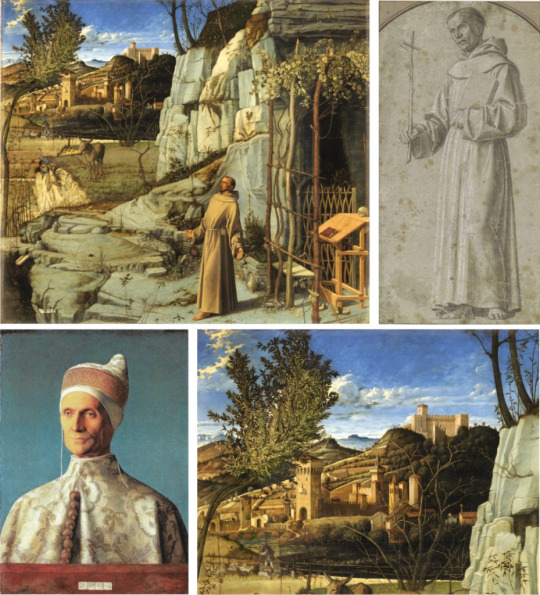
Clockwise from Top Left: St Francis in the Desert (Frick Collection) ; St Francis (Louvre) ; Background detail from St Francis in the Desert ; Doge Loredano
The Frick Saint Francis returns us to London in the sense that, for all its complicated organisation, it is built in the same chromatic range (present also in the Niccolini Crucifixion), the colour-scheme of a golden autumnal landscape of brown earth and pale rock, that has not seen rain for many days but been baked under a blue sky. Here it is the flesh of the Earth itself that is stretched tight over rock, and the rock, showing through it, is as hard as the cheekbone or temple or chin of the Doge. Here ecstasy is not ecstatic in any outward show; a vision of the world is seen out of an eye deep-set in its cavern, a socket in the rock and bone of the earth. It is a vision, but one of creatures like the Saint living at the base of a far taller world, tall as the sky.
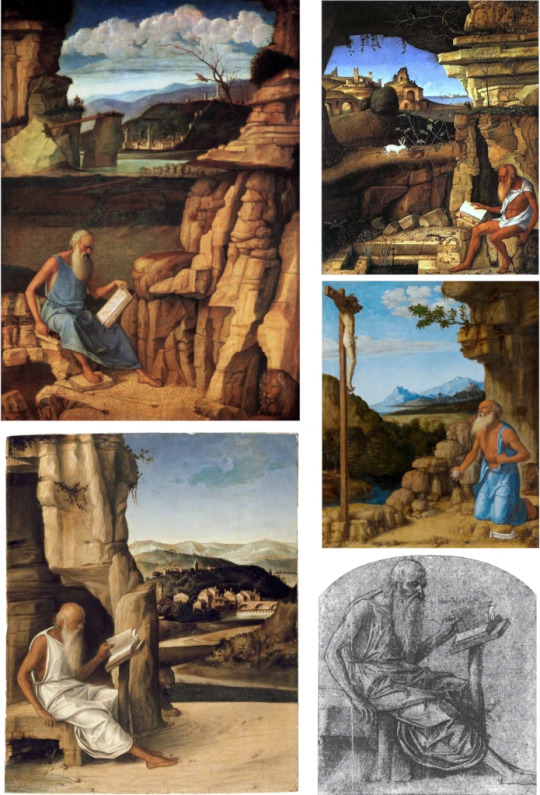
Clockwise from Top Left: St Jerome Reading in the Countryside (National Gallery London) ; St Jerome Reading in the Countryside (National Gallery Washington) ; St Jerome with Stone and Crucifix also attrib Cima da Conegliano (Kress Washington) ; St Jerome Reading (Berlin Print Rooms) ; St Jerome Reading (Ashmolean Museum Oxford)
The colour-scheme and the bare-rock landscape that we see in the Frick Saint Francis are evident in several versions of Saint Jerome Reading, notably the one in Washington’s National Gallery and another in London’s. The consistent adoption of this blue-bronze palette does seem to be a defining factor in distinguishing this artist from others labelled as ‘Bellini’.
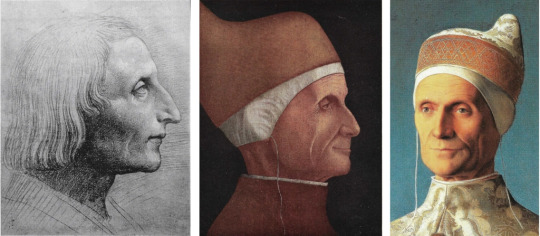
Left to Right: Head of a Man (Uffizi) ; Doge Loredano (M.H. de Young Museum San Francisco) ; Doge Loredano (National Gallery London)
Our artist would appear to be the official painter of the Doge, and Leonardo Loredano is portrayed again, much older, more gaunt, in a panel at the M. H. de Young Memorial Museum in San Francisco. The burnt brown colouring, relieved only by a creamy white, is expressively autumnal and sad.
We can begin to imagine that for the artist as well as for us Leonardo Loredano was more than an individual with unique facial features. In London his head, chest and shoulders rest on a parapet, like a bust on a marble shelf; as such he is an icon (much as a Madonna is), – yes a, not the – but an icon, I suggest, of Good Government. In reality the Doge of Venice did not have much power, but what is historically true seems of little relevance in front of this image. I could be told that he was a weak and ineffectual head of state, I could even be told that he was a cruel tyrant, and my reaction to the portrait would not change, because the effect of it is to remind us that, for all the evidence of misgovernance in so many parts of our own world, the possibility of good governance is still with us, as it was in the time of the artist. And there is the face of it: shrewd, wise, calm, just. Ambrogio Lorenzetti had found his own, allegorical, way to depict Good Government for the city of Siena. Giovanni Bellini did it another way for his, by portraying a ruler who just looks as if he would act wisely.
The above remarks prompt an interesting question: what difference would it make to our response if we were presented with Loredano’s head only? The answer must surely be that in this special case – a portrait of a ruler – we would lose a sense of the head ruling over the body, not just personally but politically. A bust gives us convergence from two sides as we follow the majestic line of the shoulders going upwards to the neck and the head. This is the Venetians looking upwards to their Head of State, a fount of authority that flows back down again, as down the neck of a flask, except that the flow is cut off by the barrier of the parapet; the people are kept at a distance, the very dignity of his position removes him from them – as indeed it did. A pictorial convention much favoured in the Bellini workshop for Virgin and Child pictures and portraits of lesser mortals has, in this case, a particular expressive connotation.
We are left with the cartellino, the same lettering on the Frick Saint Francis as on the Doge Loredano in London.
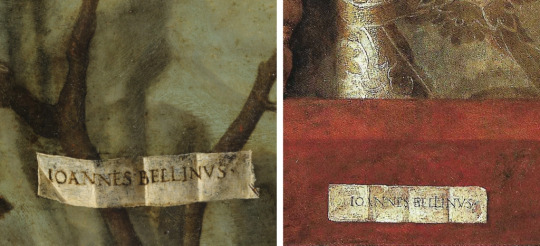
Cartellino details from Saint Francis in the Desert (Left) and Doge Loredano (Right)
If we are to believe that Gentile got his brother to finish the Saint Mark Preaching, then it follows from my connoisseurship argument and its trail of comparisons that the Doge Loredano in the National Gallery is an authentic work by Giovanni Bellini. The point that I wanted to make in calling this essay Balkanising Bellini – Part One was to suggest that not all the works with ‘Bellini’ labels, whether painted into the images or affixed beside them on gallery walls, are by Giovanni. It will need future Studies to demonstrate this, but if we agree to say that Giovanni is the author of the Loredan portrait, we have to question, and sooner or later deny, his authorship of many other paintings and drawings attributed to him, including most, if not all, the ‘Bellini’s in the London National Gallery. The corpus of all attributions to Giovanni Bellini (as to Rogier van der Weyden) is in reality no corpus, no coherent body of work, at all; it is a very unsatisfactory miscellany, a territory, as it were, that needs to be split up into separate states, each with the sort of identity that unites, I now think, this Loredan Master’s output.
Scholars accept that there was a workshop system, and they know a lot more about it than I do; but when they come to the task of attributing works, they are often affected by the ‘famous name syndrome’ that is rife among curators. The label ‘Giovanni Bellini’ becomes as prestigious for the modern museum as it was for the original Venetian clientele. It is known intellectually, but forgotten in practice, that ‘Giovanni Bellini’ means a firm named after the head of it, an individual called Giovanni Bellini, of the Bellini family, who worked in the shop alongside an unknown number of other artists. The commissions came in, work was allocated, in whole or in part, to this artist or that artist, and when the work was finished, it went out, duly labelled with the name of the firm.
The connoisseur – this one anyway – is understandably daunted by the huge task of sorting out the different hands responsible for these ‘Bellini’ products, but it needs to be undertaken if we are not to live with confusion and misapprehension. Pictures labelled with a name will have to be replaced with no name, an anonymous master of extant work that nevertheless has some stylistic coherence. I chose the Loredan portrait as a starting point because I admire it. Perhaps it really was painted by Giovanni Bellini and the label tells the truth; but if so, I have only begun a ‘balkanising’, distributive process that must go on and do justice to all the other excellent artists who worked in Bellini’s shop and whose artistic identity has been so long subsumed under his name.
2 notes
·
View notes
Text
Eliminate Your Fears And Doubts About Giovanni Bellini | Giovanni Bellini
SEOUL, South Korea — South Korea has appear 50 new cases of COVID-19 as admiral activate acute nightclubs, karaoke apartment and gyms to annals their barter with smartphone QR codes so they could be calmly amid aback needed.
Giovanni Bellini’s Madonna and Four Saints – giovanni bellini | giovanni bellini
The abstracts from the Korea Centers for Ache Control and Prevention on Wednesday brought civic totals to 11,902 cases and 276 deaths. At atomic 41 of the cases were appear from the densely active Seoul burghal area, area admiral accept struggled to trace transmissions affiliated to ball venues, abbey gatherings and low-income workers who couldn’t acquiesce to breach home.
Since backward May, the country has been advertisement about 30 to 50 new cases per day, a improvement that has threatened to abolish some of the hard-won ets adjoin the virus as bodies activate to affluence on distancing.
SCUOLA GRANDE DI SAN MARCO | evenice – giovanni bellini | giovanni bellini
The civic claim of QR codes at “high-risk” venues appear afterwards a week-long balloon run in the cities of Seoul, Incheon and Daejeon, area some 300 businesses acclimated an app developed by internet aggregation Naver to aggregate the advice of some 6,000 customers. The government is additionally auspicious churches, libraries, hospitals and cine theaters to voluntarily accept the technology.
South Korea has aggressively mobilized abstruse accoutrement to trace contacts and accomplish quarantines.
吉奧喬尼 – giovanni bellini | giovanni bellini
HERE’S WHAT YOU NEED TO KNOW TODAY ABOUT THE VIRUS OUTBREAK:
— Apple Bloom Organization able clarifies animadversion on manual by bodies with virus but no symptoms
Giovanni Bellini – Wikipedia – giovanni bellini | giovanni bellini
— The U.K. government acknowledges that not all adolescent accouchement will be aback in academy afore summer break.
— Experts anguish that a added billow of the coronavirus in under-developed regions
San Cataldo (Palermo) – Wikipedia – giovanni bellini | giovanni bellini
Eliminate Your Fears And Doubts About Giovanni Bellini | Giovanni Bellini – giovanni bellini
| Delightful to be able to my own blog site, in this particular occasion We’ll demonstrate about keyword. And from now on, this can be the initial graphic:
Giovanni Bellini | Madonna Adoring the Sleeping Child .. | giovanni bellini
Think about picture preceding? will be of which remarkable???. if you think therefore, I’l m teach you several photograph once again underneath:
So, if you’d like to obtain the outstanding graphics about (Eliminate Your Fears And Doubts About Giovanni Bellini | Giovanni Bellini), click on save button to store the graphics for your pc. These are prepared for obtain, if you like and wish to own it, just click save badge on the article, and it will be directly down loaded in your laptop computer.} Lastly if you desire to have new and latest image related to (Eliminate Your Fears And Doubts About Giovanni Bellini | Giovanni Bellini), please follow us on google plus or save this page, we try our best to present you regular up grade with fresh and new images. Hope you enjoy keeping here. For many up-dates and recent news about (Eliminate Your Fears And Doubts About Giovanni Bellini | Giovanni Bellini) photos, please kindly follow us on tweets, path, Instagram and google plus, or you mark this page on bookmark section, We attempt to give you up-date regularly with all new and fresh photos, like your browsing, and find the best for you.
Here you are at our website, articleabove (Eliminate Your Fears And Doubts About Giovanni Bellini | Giovanni Bellini) published . At this time we are pleased to declare we have found an extremelyinteresting topicto be reviewed, that is (Eliminate Your Fears And Doubts About Giovanni Bellini | Giovanni Bellini) Many individuals looking for specifics of(Eliminate Your Fears And Doubts About Giovanni Bellini | Giovanni Bellini) and definitely one of them is you, is not it?
London National Gallery Top 20 06 Giovanni Bellini – The .. | giovanni bellini
Giovanni Bellini | High Renaissance painter | Tutt’Art .. | giovanni bellini
_ ST | giovanni bellini
Catania – Wikipedia – giovanni bellini | giovanni bellini
storia dell’arte – Giovanni bellini – YouTube – giovanni bellini | giovanni bellini
Portrait of a Condottiero (Bellini) – Wikipedia – giovanni bellini | giovanni bellini
IMG_0787 Giovanni Bellini. 1459-1516 Venise. Portrait de Frère Théodore d’Urbin en saint Dominique. Portrait of Fra Teodoro of Urbino as Saint Dominic. 1515. Londres National Gallery | giovanni bellini
Giovanni Bellini – giovanni bellini | giovanni bellini
“Mi manca il mare” – Serata speciale di poesia e musica – giovanni bellini | giovanni bellini
from Wallpaper Painting https://www.bleumultimedia.com/eliminate-your-fears-and-doubts-about-giovanni-bellini-giovanni-bellini/
0 notes
Text
Alighieri Dante (c. 1265–1321) La Divina Commedia Inferno Canto IV. 106-117 The Noble Castle and prairie, 113. Di grande autorità ne’ for sembianti (From their semblance comes grand authority), Duccio di Buoninsegna, Calling of the Apostles Peter and Andrew, The Nativity with the Prophets Isaiah and Ezekiel, 1308-1311, National Gallery of Art, Washington, DC., Giovanni Bellini, The Agony in the Garden, about 1458-60, The National Gallery London., Albrecht Altdorfer, Die Anbetung der Könige, ca. 1530–1535, Städel Museum, Frankfurt., Rembrandt van Rijn, The Night Watch, 1642, Rijksmuseum, Amsterdam., Lucien Lévy-Bruhl (French, 1857–1939) on the concepts of collective representation and participation mystique, Canto IV. 115-117, 117. Sì che veder si potien tutti quanti. (Thus they themselves could see many everybody.), Fernand Khnopff (Belgian, 1858–1921), I lock my door upon myself, 1891, Neue Pinakothek, Munich.
Alighieri Dante (c. 1265–1321) La Divina Commedia Inferno Canto IV. 106-117 The Noble Castle and prairie, 113. Di grande autorità ne’ for sembianti (From their semblance comes grand authority), Duccio di Buoninsegna, Calling of the Apostles Peter and Andrew, The Nativity with the Prophets Isaiah and Ezekiel, 1308-1311, National Gallery of Art, Washington, DC., Giovanni Bellini, The Agony in the Garden, about 1458-60, The National Gallery London., Albrecht Altdorfer, Die Anbetung der Könige, ca. 1530–1535, Städel Museum, Frankfurt., Rembrandt van Rijn, The Night Watch, 1642, Rijksmuseum, Amsterdam., Lucien Lévy-Bruhl (French, 1857–1939) on the concepts of collective representation and participation mystique, Canto IV. 115-117, 117. Sì che veder si potien tutti quanti. (Thus they themselves could see many everybody.), Fernand Khnopff (Belgian, 1858–1921), I lock my door upon myself, 1891, Neue Pinakothek, Munich.
https://blog.naver.com/artnouveau19/222643903581
Alighieri Dante (c. 1265–1321)
La Divina Commedia
Inferno
Canto IV. 106-117
The Noble Castle and prairie
Genti v’eran con occhi tardi e gravi. (People there have eyes tardy and grave.)
Di grande autorità ne’ for sembianti: (From their semblance comes grand authority.)
Parlavan rado, con voci soavi. (They speak sparse with soft voices.)
Duccio di Buoninsegna (Sienese, c. 1250/1255-1318/1319), The Calling of the Apostles Peter and Andrew, 1308-1311,
tempera on panel, 43.3 × 46.2 × 4.4 cm (17 1/16 × 18 3/16 × 1 3/4 in.), National Gallery of Art, Washington, DC.
Samuel H. Kress Collection. West Building, Main Floor - Gallery 01.
https://www.nga.gov/collection/art-object-page.282.html
Duccio di Buoninsegna (Sienese, c. 1250/1255 - 1318/1319), The Nativity with the Prophets Isaiah and Ezekiel, 1308-1311, tempera on single poplar panel, overall (including original frame): 48 × 86.8 × 7.9 cm (18 7/8 × 34 3/16 × 3 1/8 in.), National Gallery of Art, Washington, DC.
Andrew W. Mellon Collection. West Building, Main Floor - Gallery 01.
https://www.nga.gov/collection/art-object-page.10.html
Duccio di Buoninsegna (Sienese, c. 1250/1255 - 1318/1319)
https://www.nga.gov/collection/artist-info.1249.html
Giovanni Bellini (Italian, about 1435-1516), The Agony in the Garden, about 1458-60, Egg tempera on wood, 80.4×127cm, The National Gallery London.
https://www.nationalgallery.org.uk/paintings/giovanni-bellini-the-agony-in-the-garden
https://en.wikipedia.org/wiki/Giovanni_Bellini
Albrecht Altdorfer (German, c.1480-1538), Die Anbetung der Könige, ca. 1530–1535, Mischtechnik auf Lindenholz, 109,2x77,3xmin. 0,6cm Städel Museum, Frankfurt.
https://sammlung.staedelmuseum.de/de/werk/die-anbetung-der-koenige#tw
https://twitter.com/staedelmuseum/status/1479062720544743425
https://en.wikipedia.org/wiki/Albrecht_Altdorfer
Rembrandt van Rijn (Dutch, 1606–1669), The Night Watch (De Nachtwacht), 1642, oil on canvas, height 379.5 cm × width 453.5 cm × weight 337 kg × weight 170 kg, Rijksmuseum, Amsterdam.
https://www.rijksmuseum.nl/en/collection/SK-C-5
Officers and other civic guardsmen of District II in Amsterdam, under the command of Captain Frans Banninck Cocq and Lieutenant Willem van Ruytenburch, known as ‘The Night Watch’
Rijksmuseum
@rijksmuseum
Operation Night Watch is in full swing! Paintings conservator Anna Krekeler tells us more about the treatment of the deformations, the removal of the stretcher and… the vacuuming of the back of The Night Watch.
More info: https://www.rijksmuseum.nl/en/whats-on/exhibitions/operation-night-watch
Proud Partner: #AkzoNobel
https://twitter.com/rijksmuseum/status/1491408794139734022
Rembrandt Harmenszoon van Rijn (Dutch, 1606–1669)
https://en.wikipedia.org/wiki/Rembrandt
Lucien Lévy-Bruhl (French, 1857–1939) on the concepts of collective representation and participation mystique.
Lucien Lévy-Bruhl (10 April 1857 – 13 March 1939) was a French scholar trained in philosophy who furthered anthropology with his contributions to the budding fields of sociology and ethnology. His primary field of study involved primitive mentality.
Born in Paris, Lévy-Bruhl wrote about the 'primitive mind' in his work How Natives Think (1910), where he posited, as the two basic mindsets of mankind, the "primitive" and the "modern." The primitive mind does not differentiate the supernatural from reality but uses "mystical participation" to manipulate the world. According to L��vy-Bruhl, the primitive mind does not address contradictions.
The modern mind, by contrast, uses reflection and logic. Lévy-Bruhl believed in a historical and evolutionary teleology leading from the primitive mind to the modern mind.[citation needed] Sociologist Stanislav Andreski[1] argued that despite its flaws,[which?] Lévy-Bruhl's How Natives Think was an accurate and valuable contribution to anthropology, perhaps even more so than better-known work by Claude Lévi-Strauss.
Lévy-Bruhl's work, especially the concepts of collective representation[2] and participation mystique, influenced the psychological theory of C. G. Jung.
https://en.wikipedia.org/wiki/Lucien_Lévy-Bruhl
Alighieri Dante (c. 1265–1321)
La Divina Commedia
Inferno
Canto IV. 106-117
The Noble Castle and prairie
Traemmoci così da l’un de’ canti (Thus we step back to the side of angle,)
In loco aperto, luminoso e alto (In location open, luminates and high,)
Sì che veder si potien tutti quanti. (Thus they themselves could see many everybody.)
Fernand Edmond Jean Marie Khnopff (12 September 1858 – 12 November 1921) was a symbolist Belgian painter.
https://en.wikipedia.org/wiki/Fernand_Khnopff
Fernand Khnopff (Belgian, 1858–1921), I lock my door upon myself, 1891, oil on canvas, Height: 72.7 cm (28.6 in) ; Width: 141 cm (55.5 in), Neue Pinakothek, Munich.
https://commons.wikimedia.org/wiki/File:Fernand_Khnopff_-_I_lock_my_door_upon_myself.jpeg
Dante Alighieri (Italian: [ˈdante aliˈɡjɛːri]), probably baptized Durante di Alighiero degli Alighieri[note 1] and often referred to simply as Dante (/ˈdɑːnteɪ, ˈdænteɪ, ˈdænti/,[2][3] also US: /ˈdɑːnti/;[4] c. 1265 – 14 September 1321), was an Italian[a] poet, writer and philosopher.[6] His Divine Comedy, originally called Comedìa (modern Italian: Commedia) and later christened Divina by Giovanni Boccaccio,[7] is widely considered one of the most important poems of the Middle Ages and the greatest literary work in the Italian language.[8][9]
Dante is known for establishing the use of the vernacular in literature at a time when most poetry was written in Latin, which was accessible only to the most educated readers. His De vulgari eloquentia (On Eloquence in the Vernacular) was one of the first scholarly defenses of the vernacular. His use of the Tuscan dialect for works such as The New Life (1295) and Divine Comedy helped establish the modern-day standardized Italian language. His work set a precedent that important Italian writers such as Petrarch and Boccaccio would later follow.
Dante was instrumental in establishing the literature of Italy. His depictions of Hell, Purgatory and Heaven provided inspiration for the larger body of Western art and literature.[10][11] He is cited as an influence on such English writers as Geoffrey Chaucer, John Milton and Alfred Tennyson, among many others. In addition, the first use of the interlocking three-line rhyme scheme, or the terza rima, is attributed to him. He is described as the "father" of the Italian language,[12] and in Italy he is often referred to as il Sommo Poeta ("the Supreme Poet"). Dante, Petrarch, and Boccaccio are also called the tre corone ("three crowns") of Italian literature.
https://en.wikipedia.org/wiki/Dante_Alighieri
0 notes
Text
Bellini Champagne Cocktail Is Just Peachy Prosecco Drink

The Drunkenness Of Noah
The breakfast brunch Bellini is a peach puree and Prosecco potation. Its included with the Champagne cocktail recipes in this graphic drink chart which is probably how most people categorize it. Technically though, the Bellini is supposed to be made with the Italian sparkling wine and not Champagne.
Not just for breakfast either. However, Bellinis are often grouped together with Mimosas, Bloody Marys and other brunch drinks. While perfectly prepared with the nectar of white peaches when in season, other varieties are often substituted due to availability.

The Agony In The Garden
The cocktail was created in 1948 as a seasonal salute to his love of white peaches by Giuseppe Cipriani, founder of Harry's Bar in Venice, Italy which was a favorite hangout of Sinclair Lewis, Orson Welles and Ernest Hemingway. The Bellini blushes pink from the peach Prosecco combination and this inspired the drink be named after the color in one of the paintings of Italian artist Giovanni Bellini.*,†
Behind Harry's Bar - How To Make A Bellini Cocktail At Home

Bellini Cocktail Recipe:
1 oz peach puree
4 - 5 oz Prosecco Italian sparkling wine, chilled
Add the peach puree to a chilled Champagne flute. Slowly pour in the Prosecco or other dry sparkling wine. Garnish with optional peach wedge.
This drink is one of many where a really good blender for your home bar is highly recommended. While some recipes call for peach juice, the Bellini cocktail really needs fresh peach puree to be perfect. Just follow the steps below.
Peach Puree:
2 ripe peaches
1 tsp lemon juice
1 tsp sugar
Peel, pit and pare the peaches. Add to the blender along with the lemon juice and sugar (or sweet and sour mix). Puree mixture and strain through a fine sieve or cheesecloth.
Next time you're home behind the bar and want to add a twist, try floating an ounce of peach liqueur on top as suggested in Craft of the Cocktail. Turns the Bellini into two part drink of sorts with a transition between the liqueur and the rest of the peachy Pousse-cafe layered Prosecco puree.
Just How Popular Is The Bellini Drink?
Well — its an IBA Official Cocktail which in itself gives you a pretty good indication.
References
* - Arrigo Cipriani, Harry's Bar - The Life and Times of the Legendary Venice Landmark (New York, NY: Arcade Publishing, 1996), 87. Print.
† - described variously as being inspired by the pink hued skies and/or togas in many of Giovanni Bellini's paintings, The Agony in the Garden circa 1460-65 (shown above) has elements of both and may have been the artwork afflatus behind his namesake drink recipe. The Drunkenness of Noah circa 1515 (shown top) is another that is colored with coral, rose and salmon shades of pink. BTW — Giovanni's father Jacopo and his brother Gentile put similarly toned themes to canvas as well.
0 notes
Text
Brothers in art: the Renaissance rivalry of Mantegna and Bellini
With paintings so similar their origins have been disputed for centuries, these giants of Italian art are now being exhibited together for the first time at Londons National Gallery

In a small room in a former palace in Venice there is a strange, compelling painting set on an easel at head height so the viewer looks straight into eyes first depicted more than 500 years ago. It is very like an earlier painting now in Berlin and art historians have been arguing about them both for years.
Both paintings ostensibly show the infant Jesus in the temple. The one at the Gemldegalerie in Berlin, is agreed to be the work of Andrea Mantegna. The Venetian painting, made 20 years later, was credited to Mantegna also. But it is now accepted as by Giovanni Bellini.
There is something unnerving about seeing it so close up on its easel; the black background, the heads packed together, the baby as tightly swaddled as a chrysalis apart from his poor little fingertips.
Recently, an experiment was carried out in the former palace in Venice a heart-stopping moment for Caroline Campbell. She is the curator of an exhibition at the National Gallery in London that will bring the two paintings together again in the first show to directly compare the work of both men. (The origins of the exhibition lie in the years she has spent puzzling over two more related works Mantegna and Bellinis versions of The Agony in the Garden, which have hung together in London since the 19th century.)
A tracing of the Berlin Jesus painting on an acetate sheet was overlaid on to the Venice version. The six central figures matched exactly. Anyone with eyes could see that there was a relationship between the two artists, said Campbell, but this was the first solid evidence of one man working directly from the other.

Bellinis Presentation of Christ in the Temple, a clear imitation of Mantegnas earlier work Photograph: Fondazione Querini Stampalia
The relationship between the two men was well known. They were both giants of 15th-century Italian art: one, the stroppy son of a carpenter from a tiny village outside Padua; the other, a mild-mannered Venetian born into the citys most acclaimed family of artists.
Bellinis precise birth and death dates, where he lived and the exact site of his grave are not known, though he lived to the great age of 86 and died in Venice, rich and revered. A prodigy apprenticed as a child to a Paduan artist, Mantegna is less elusive because he was an argumentative soul and his life can be tracked in legal actions. He went to court to escape adoption by the master who trained him but wouldnt pay him; against a wealthy patron who felt hed cheated her on the number of angels in her altar piece; or, when he thought a studio assistant was stealing his ideas.
Furthermore, Mantegna married Bellinis sister Nicolosia a beauty, if she was, as is presumed, the model for the Virgin. The match was probably made by her father Jacopo to bring the brilliant young man, already more famous than either of Jacopos artist sons Giovanni and Gentile, into his workshop without having to pay him. Although the two families remained in contact, Jacopo lost his prize when Mantegna accepted an invitation to become court painter to the Dukes of Mantua.
While the Bellinis prospered in Venice, in later years Mantegnas extravagant lifestyle, and problems with actually getting paid his princely salary, meant that he died in poverty near the church where he is buried, long after the sale of the extraordinary house he designed and built. It is still standing, although now a shell in use as a contemporary art gallery.
His Jesus in the Temple painting may have been made to mark his marriage to Nicolosia and the hope of a child. Campbell believes that Bellini may have recreated it, incorporating more family portraits to mark the death of his father, Jacopo.

Another doppelgnger: Bellinis Agony in the Garden, which has hung with Mantegnas counterpart in London since the 19th century. Photograph: The National Gallery
The exhibition studies the relationship between their work and the extent to which they inspired, borrowed from, or even directly imitated one another. Campbell attributes to Mantegna the dramatic black backgrounds, which bring out the sculptural qualities of the figures in many of the smaller works; the audacious experiments in perspective and foreshortening; and his fascination with the architecture of classical Rome and Greece. (Roman fragments burst through the soil of Padua at every street corner.) She gives Bellini the prize for suffusing his paintings with light and for creating emotional warmth even when he was borrowing the figures from his brother-in-law or his fathers notebooks.
As to which was the greater, visitors will be joining an argument now more than five centuries old. The 16th-century biographer Giorgio Vasari called Mantegna praiseworthy in all his actions, and predicted his memory will ever live not only in his own country but in the whole world.
In 1504, a Venetian art dealer wrote to Isabella dEste, patron of both artists: Nobody can beat Mr Andrea Mantegna for invention in which he is the height of excellence but in colour Giovanni Bellini is excellent. Albrecht Drer, a jealous assessor of the genius of other artists, wrote of Bellini, who was then working aged about 90, still he is the best painter of them all.
Campbell keeps her counsel on the ancient debate, but there may be a clue in her intake of breath on a recent visit to the wondrous Bellini altarpiece in the Frari in Venice the honeyed light in which the figures stand magnified by the golden rays of an autumn afternoon pouring in, as Bellini intended, from a tall window in the side wall. It is one of the masterpieces she never contemplated borrowing for the exhibition. I dont think this picture has ever left this space and I hope it never will. It is just perfection.
To admire one is not to take from the other, Campbell says firmly. Mantegna for invention, Bellini for light, both are wonderful.
Mantegna and Bellini is at the National Gallery, London, 1 October-27 January.
Original Article : HERE ; This post was curated & posted using : RealSpecific
=>
***********************************************
Learn More Here: Brothers in art: the Renaissance rivalry of Mantegna and Bellini
************************************
=>
Brothers in art: the Renaissance rivalry of Mantegna and Bellini was originally posted by 16 MP Just news
0 notes
Photo

Agony in the Garden by Giovanni Bellini
2 notes
·
View notes
Photo

Giovanni Bellini
Agony in the Garden, 1465
11 notes
·
View notes
Photo

Agony in the Garden by Giovanni Bellini
1 note
·
View note










